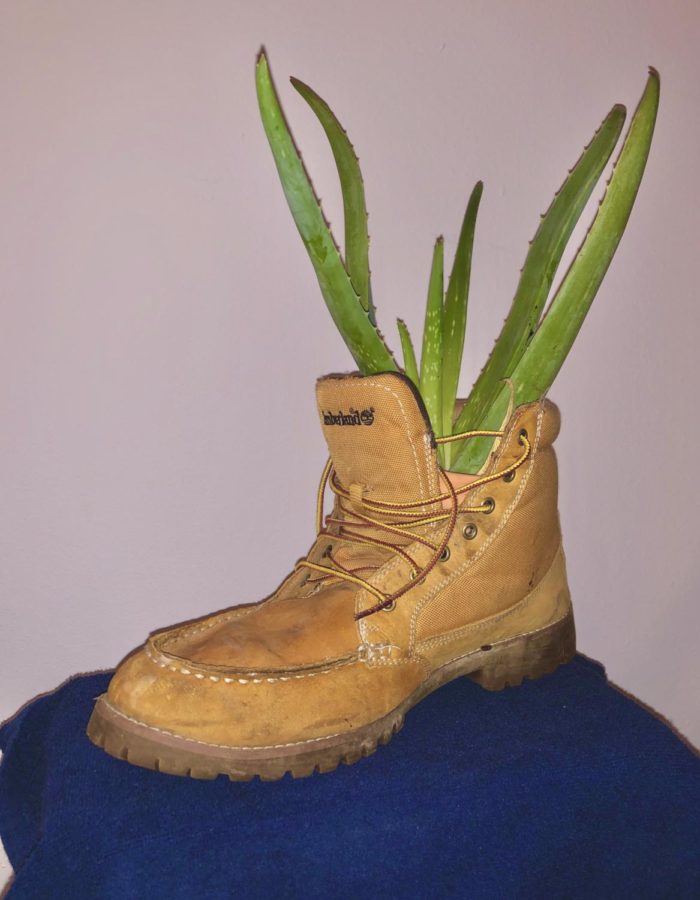Tips to keep your plants happy and healthy
Whitney Spencer / Iowa State Daily
Plant owners can make vases out of many everyday items, such as shoes, to house their plants. Ball jars and mugs are also common when looking to pot a plant.
December 9, 2019
Successfully raising a houseplant can prove to be very challenging at times. Trying to figure out when and how to water it and how much sunlight to give it are all crucial factors in determining a plant’s survival.
Makenzie Massengale, sophomore in animal science, has blossomed into an exceptional plant mom. She currently has five flourishing houseplants.
Massengale recommends to not over-water plants. Too much water is harmful for plants and is usually the most common mistake that leads to a plant’s demise.
“Overwatering is not good,” Massengale said. “That’s how you kill them.”
Riley Henry, sophomore in animal ecology, said he struggles to keep his plants alive. He said he feels that he doesn’t know how much to water plants or how much sunlight to give them.
“I struggle with over- and under-watering as well as the fact that I never know how much sunlight or what type of light my plants need,” Henry said.
When first purchased, plants usually come with a little tab that recommends how much water it requires. Rule of thumb says to water a plant enough to keep the soil moist, but not wet. Soil moisture can be checked by using the tip of your finger.
Providing the correct amount of light for the plant is also a necessity. Each plant has its own unique needs when it comes to the amount of light needed for growth.
“Because the sun provides all wavelengths of light, houseplants often perform best when placed near a sunny window,” according to the Reiman Gardens website.
The website suggests to refrain from using bulbs as a source of lighting because plants use certain colors of light for photosynthesis and most bulbs do not emit the needed hues.
Photosynthesis is the process plants use to produce food from carbon dioxide and water.
If artificial lighting is used, the website suggests to keep the lighting on for 12 to 16 hours a day, within four to six inches of the plant tops.
“Plants that prefer bright light will thrive in a south-facing window,” according to the Gardener’s Supply Company website. “East-and west-facing windows have moderate sun. North windows have very little sun. Plants that require high light levels will do best under a grow light.”
According to the Reiman Gardens website, if plants are experiencing lighting issues, they will often show one of more of the following signs: A stretched or “leggy” appearance, dead or dying older foliage, lighter than normal leaves, increased incidence of pest or disease and abnormal leaf size.
Refrain from putting plants in “trouble spots.” These are spots in a home where temperature may fluctuate.
Gardener’s Supply Company recommends to “locate them away from heating and air conditioning ducts, and don’t put them on top of a radiator, or between curtains and a frosty window.”
Above all, know your plant. It is always a good idea to do research on a plant before purchasing. Some plants need a particular environment that can’t be adequately provided in certain households.
Knowing the cultural needs of specific plants will increase your chances of selecting plants that will survive, and even thrive, in the desired home or office spaces.







